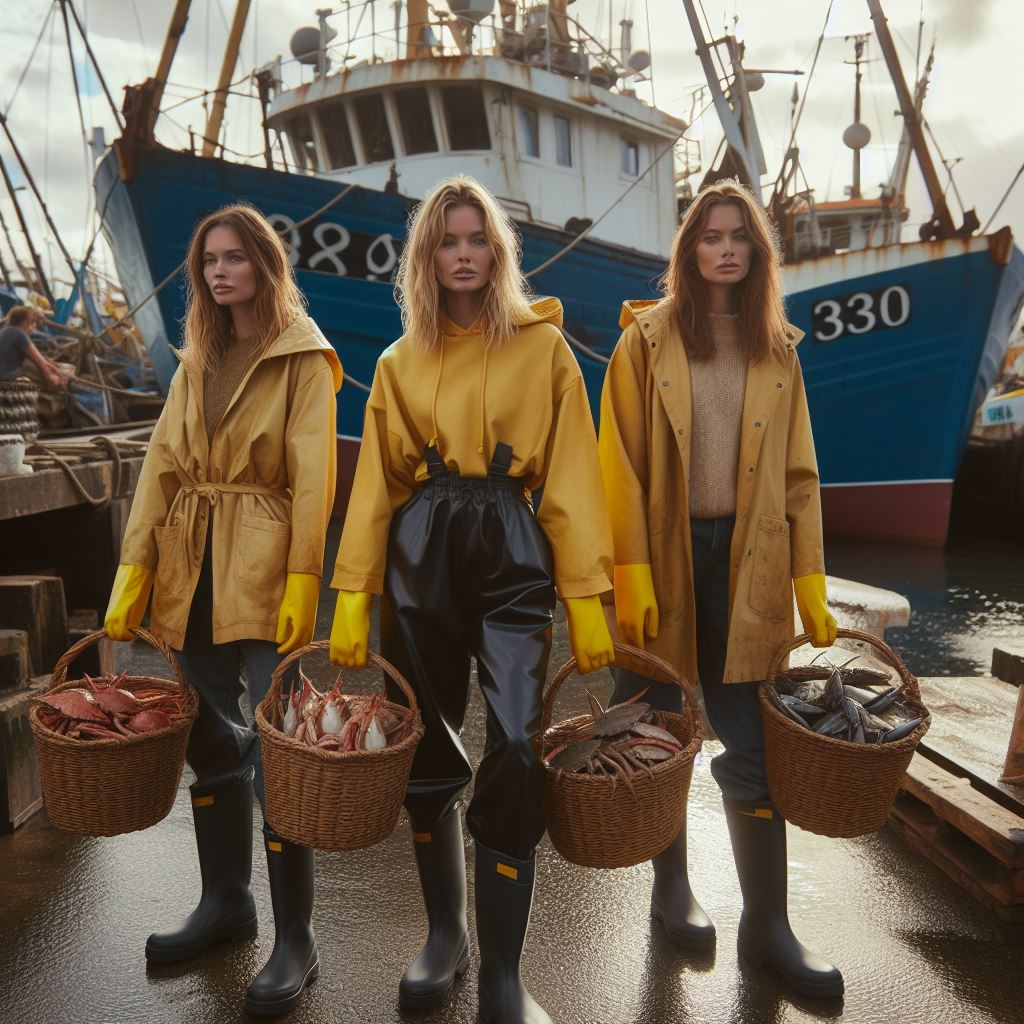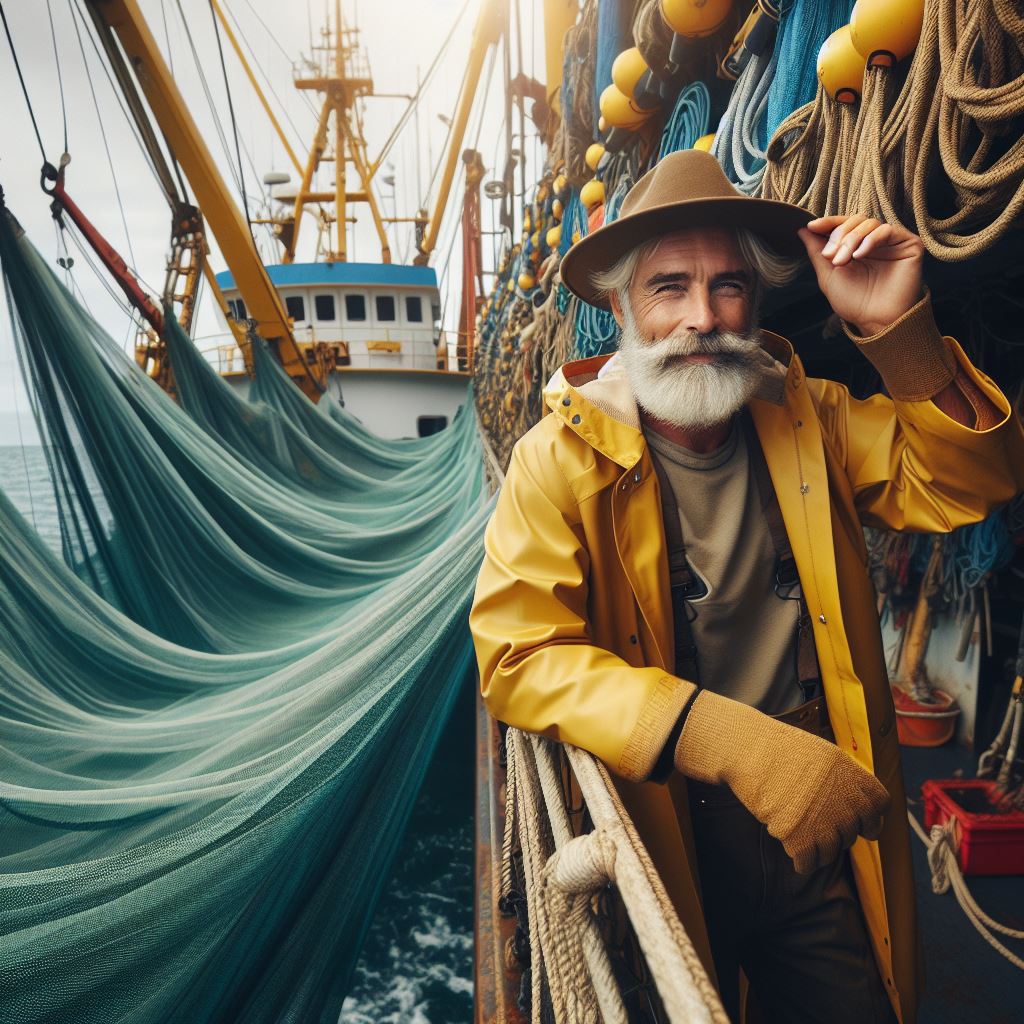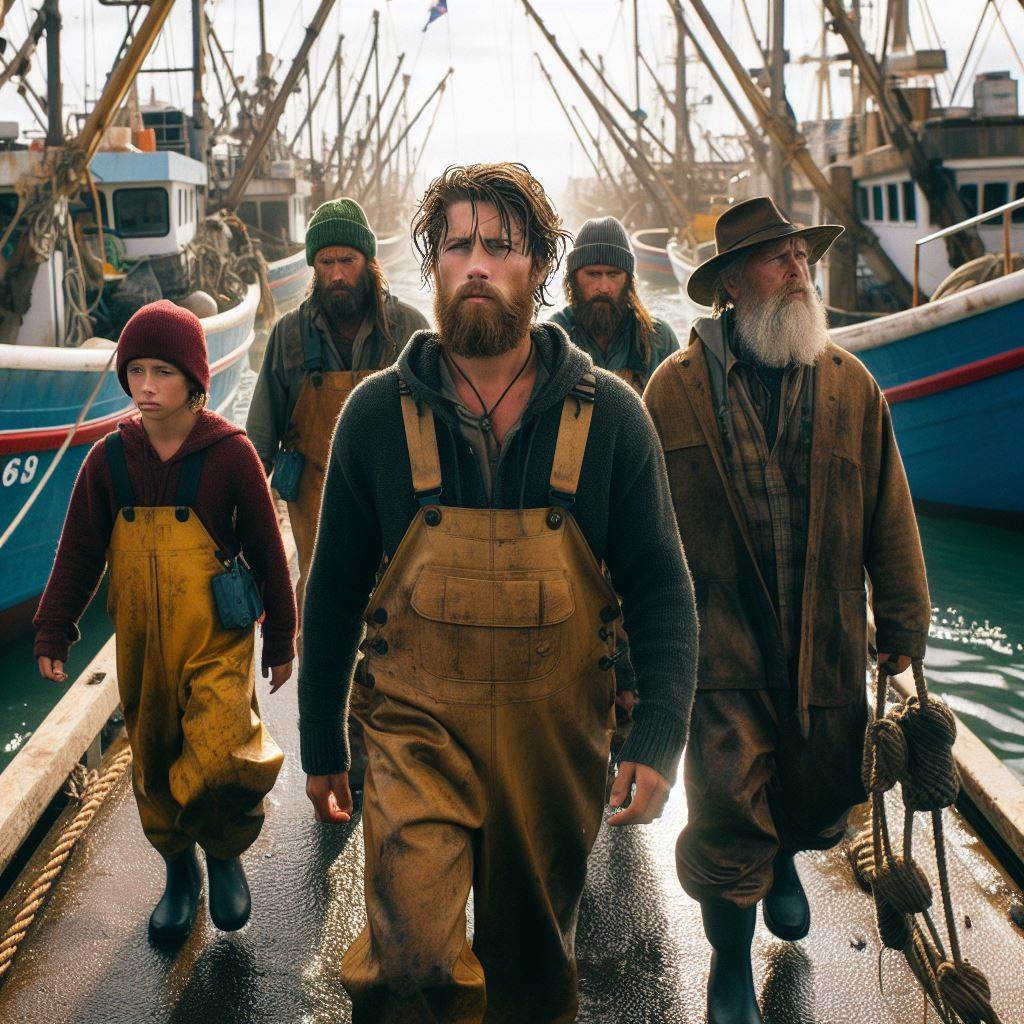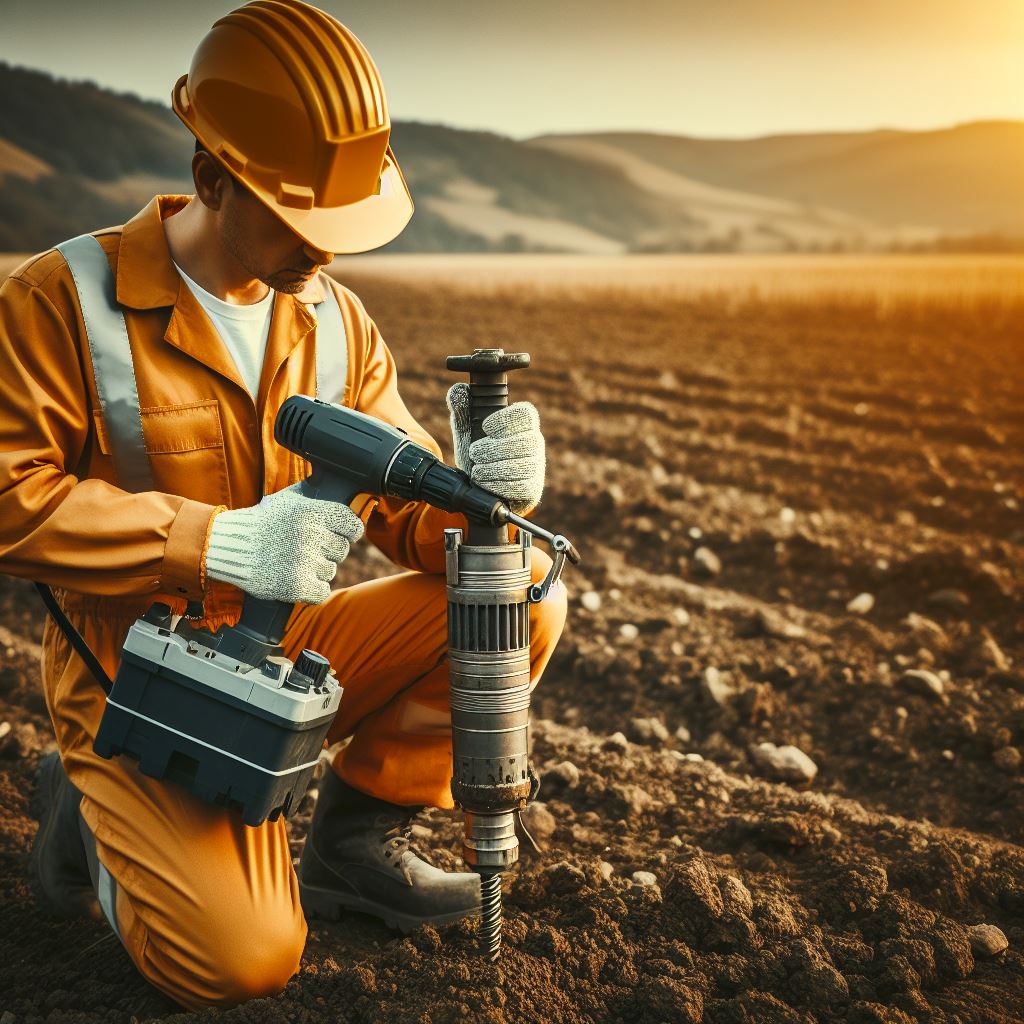Introduction
In the perilous domain of Australian fisheries, safety at sea stands as a paramount concern, shaping the daily endeavors of fishers across the nation.
The vitality of implementing robust safety measures cannot be overstated, as it serves as the cornerstone for safeguarding the lives and livelihoods of those navigating the unpredictable waters.
Safety measures are not mere precautions but essential lifelines in the fishing industry, where each voyage entails inherent risks.
From adverse weather conditions to mechanical failures, fishers encounter a myriad of challenges that underscore the critical need for stringent safety protocols.
Embracing these measures not only mitigates the potential for accidents and tragedies but also fosters a culture of preparedness and resilience among fishers.
This blog post embarks on an illuminating journey into the realm of safety at sea for Australian fishers, delving into the intricacies of safeguarding practices and regulatory frameworks.
We will explore the indispensable role of safety measures in mitigating risks, enhancing operational efficiency, and preserving the well-being of fishers.
Additionally, we will delve into practical strategies and resources available to fishers to bolster their safety protocols and navigate the challenges of maritime endeavors with confidence.
Join us as we navigate the tumultuous waters of Australian fisheries, shedding light on the imperative of prioritizing safety at sea and empowering fishers with the knowledge and resources needed to thrive in this demanding yet rewarding industry.
Overview of Australian Fishing Industry
Significance of Fishing in Australia
- Fishing is a vital industry in Australia, providing food security and employment opportunities.
- It supports the coastal communities and contributes significantly to the country’s economy.
- Seafood is an essential part of the Australian diet, and fishing plays a crucial role in the food supply chain.
- The industry also attracts recreational fishers and tourists, promoting sustainable tourism.
Different Types of Fishing Activities and Locations
- Commercial fishing in Australia encompasses various activities, including trawling, netting, longlining, and potting.
- Trawling involves dragging a large net along the ocean floor to catch target species like prawns and fish.
- Netting utilizes nets to trap fish near the surface or in certain areas, commonly practiced for species like tuna.
- Longlining employs a fishing line with multiple baited hooks to catch fish like snapper or swordfish.
- Potting utilizes pots or traps to catch shellfish such as crabs and lobsters.
- Different fishing activities occur in various locations, including coastal waters, estuaries, and offshore areas.
- Coastal waters are abundant in fish species like snapper and bream, accessible to both commercial and recreational fishers.
- Estuaries, such as those in Queensland, support diverse fishing activities due to the mix of freshwater and saltwater environments.
- Offshore areas provide opportunities for deep-sea fishing, targeting species like tuna, marlin, and sharks.
Statistics on the Number of Fishers and Vessels in Australia
- As of 2021, Australia had approximately 17,500 commercial fishers across the country.
- These fishers operate a diverse fleet of vessels, including trawlers, longliners, gillnetters, and small coastal boats.
- The commercial fishing sector contributes around AUD 3.2 billion annually to Australia’s GDP.
- Over 1,500 commercial fishing vessels are registered in Australia, catering to the industry’s needs.
- Recreational fishing is also prevalent, with around 3 million Australians participating in this activity.
- Recreational fishing is supported by a range of vessels, from small boats to charters and rental services.
- The government implements licensing and quota systems to manage and maintain sustainable fishing practices.
- These measures help in preserving fish stocks, minimizing bycatch and protecting vulnerable marine species.
In fact, the fishing industry holds great significance in Australia, providing not only economic benefits but also ensuring food security.
With diverse fishing activities and locations, it caters to both commercial and recreational fishers. The industry’s substantial number of fishers and vessels, and the contribution to GDP, highlight its importance.
Effective management practices are crucial to maintain sustainability and protect marine ecosystems.
Read: Youth in Farming: Australia’s New Generation
Potential Hazards and Risks
Common Hazards and Risks Faced by Australian Fishers
- Rough Seas: Unpredictable waves can cause vessels to capsize and jeopardize the lives of fishers.
- Inclement Weather: Severe storms, strong winds, and heavy rains can make fishing operations perilous.
- Slippery Decks: Wet conditions onboard can increase the risk of slips, falls, and serious injuries.
- Equipment Malfunctions: Faulty gear, machinery breakdowns, or failed safety mechanisms can pose hazards.
- Fatigue and Sleep Deprivation: Long working hours and irregular sleep patterns increase the likelihood of accidents.
- Manual Handling: Physically demanding tasks like lifting heavy objects can lead to strains, sprains, or back injuries.
- Cruise Ships and Commercial Vessels: Collisions with larger vessels are potential dangers in busy shipping lanes.
- Wildlife Encounters: Australian waters host sharks, crocodiles, and other animals that can pose threats to fishers.
- Contaminated Waters: Exposure to harmful chemicals, toxins, or pollutants may cause health problems.
Dangers of Working Offshore and in Challenging Weather Conditions
- Limited Escape Routes: Weather conditions may restrict or delay the ability to return to shore promptly.
- Poor Visibility: Fog, heavy rain, or darkness can hinder navigation and increase the risk of accidents.
- High Winds and Swells: Strong gusts and large waves make it harder to control vessels and perform tasks.
- Hypothermia and Cold Stress: Exposure to cold temperatures, particularly in winter, can lead to severe health issues.
- Communication Challenges: Extreme weather can interfere with communication devices, isolating fishers offshore.
- Vessel Capsize and Sinking: Adverse weather conditions can cause boats to capsize, leading to potential drownings.
- Falling Overboard: Rough seas or slippery decks can result in fishers falling overboard, needing immediate rescue.
- Increased Risk of Accidents: Challenging weather conditions make fishing operations more dangerous and accident-prone.
- Emotional and Psychological Impact: Constant exposure to harsh weather conditions can affect mental well-being.
Importance of Understanding Potential Threats to Personal Safety
- Injury Prevention: Recognizing hazards and risks helps fishers take proactive measures to avoid accidents.
- Emergency Preparedness: Understanding potential threats allows fishers to prepare for emergencies and respond adequately.
- Safety Equipment Use: Awareness of potential threats encourages fishers to use safety gear effectively.
- Risk Mitigation: Identifying risks enables fishers to implement safety protocols and minimize potential harm.
- Surviving Adversities: Knowledge of potential threats equips fishers with skills to survive challenging situations.
- Communication and Reporting: Understanding potential threats helps fishers communicate dangers effectively and request assistance.
- Occupational Health and Safety: Recognizing hazards promotes adherence to safety guidelines, protecting fishers’ well-being.
- Training and Education: Awareness of risks facilitates training programs that address specific safety concerns in fishing.
- Respect for the Industry: Understanding potential threats fosters a profound appreciation for the dangers fishers face daily.
In general, Australian fishers encounter various hazards and risks, including rough seas, inclement weather, and equipment malfunctions.
Working offshore and in challenging weather conditions exposes fishers to dangers such as limited escape routes and high winds.
Understanding these potential threats is crucial for personal safety, allowing fishers to prevent injuries, be prepared for emergencies, and mitigate risks effectively.
Read: Farm-to-Table Movement: An Australian Perspective
Safety Equipment and Measures
Essential Safety Equipment and Gear for Fishing Activities
- Life Jackets: Every person on board should have a properly fitting life jacket.
- Fire Extinguishers: Keep at least two fire extinguishers accessible, regularly check their pressure, and replace them when expired.
- EPIRB: Emergency Position Indicating Radio Beacon is a crucial tool that can save lives in distress situations.
- Flares: Store approved red hand-held flares and orange smoke signals in a watertight container.
- First Aid Kit: Always have a well-stocked first aid kit on board and ensure everyone knows its location.
- VHF Radio: Maintain a functional VHF radio for communication and emergency calls.
- Navigation Lights: Properly functioning navigation lights are essential, especially during low visibility situations.
- Bilge Pump: Install an automatic bilge pump to quickly remove water from the boat.
- Anchor and Rope: Carry a suitable anchor and sufficient rope to ensure the vessel remains secure when needed.
- Tools and Spare Parts: Keep essential tools and spare parts on board for minor repairs.
Proper Use and Maintenance of Personal Protective Equipment
- Life Jackets: Wear life jackets at all times when on deck or during dangerous situations.
- Protective Clothing: Dress appropriately for weather conditions with waterproof and thermal clothing.
- Gloves: Use non-slip, waterproof gloves to protect your hands during fishing operations.
- Eye Protection: Wear safety glasses or goggles to shield your eyes from flying debris or accidental splashes.
- Footwear: Wear appropriate footwear with non-slip soles to prevent falls and ensure stability on wet surfaces.
- Head Protection: Utilize hard hats to safeguard against falling objects or head injuries on deck.
- Hearing Protection: Protect your hearing against loud noises by using earplugs or earmuffs when needed.
- Safety Harness and Tether: Use a safety harness and tether when working near the vessel’s edge.
- Regular Maintenance: Inspect personal protective equipment regularly for damage and replace when necessary.
- Proper Storage: Store personal protective equipment in a clean and dry location to prevent deterioration.
Recommendations for Safety Measures
- Regular Vessel Inspections: Conduct routine checks to ensure all safety equipment is in good working condition.
- Safety Drills: Practice emergency procedures and drills to familiarize everyone with proper protocols.
- Weather Monitoring: Stay updated on weather conditions and plan fishing trips accordingly to avoid rough seas.
- Communication: Establish a reliable method of communication, such as radio or mobile phones, while on board.
- Stay Informed: Keep up-to-date with safety regulations, guidelines, and best practices for fishing activities.
- Trip Planning: Prepare a detailed trip plan including intended routes, estimated time of return, and emergency contacts.
- Training and Certification: Encourage crew members to undergo necessary safety training and acquire relevant certifications.
- Fatigue Management: Avoid fishing when fatigued, as exhaustion can impair judgment and reaction times.
- Emergency Contacts: Maintain a list of emergency contacts, including coast guard, marine rescue, and nearby vessels.
- Continuous Learning: Stay informed about new safety equipment and practices through workshops, seminars, and industry publications.
Remember, prioritizing safety and investing in proper equipment and measures will ensure a safe and enjoyable fishing experience for everyone on board.
Read: Indigenous Farming Techniques in Australia

Regulatory Compliance
Regulatory compliance is of utmost importance to ensure the safety of fishers at sea in Australia. The relevant regulations and laws governing this area provide a framework for maintaining a safe working environment.
Understanding these regulations and fulfilling the responsibilities as a fisher is crucial for the well-being of individuals and the sustainability of the industry.
Relevant regulations and laws governing safety at sea for fishers in Australia
- The Maritime Safety Regulations Act of 2003 sets out the legal framework for safety at sea.
- The Australian Fisheries Management Act of 1991 ensures sustainable fishing practices.
- Additional regulations include the Navigation Act of 2012 and the Occupational Health and Safety Act of 1991.
The Maritime Safety Regulations Act of 2003 is a key legislation in Australia that addresses safety at sea.
This act emphasizes the importance of vessel seaworthiness and mandates the presence of appropriate safety equipment on board.
Complying with this act ensures that fishers have the necessary resources to respond to emergencies effectively.
In addition to the Maritime Safety Regulations Act, the Australian Fisheries Management Act of 1991 plays a significant role in promoting sustainable fishing practices.
This act aims to protect fish stocks and the marine environment.
Fishers must comply with the requirements outlined in this act to contribute to the long-term viability of the industry.
Beyond these acts, additional regulations govern various aspects of safety at sea.
The Navigation Act of 2012 sets out rules related to vessel navigation and the prevention of collisions at sea.
The Occupational Health and Safety Act of 1991 focuses on maintaining a safe working environment for fishers, with specific guidelines regarding work practices, risk assessments, and the provision of personal protective equipment.
Responsibilities of fishers to comply with these regulations
- Fishers must maintain their vessels in a seaworthy condition and ensure appropriate safety equipment is on board.
- They should adhere to safe work practices, including regular safety drills and following emergency procedures.
- Fishers should also obtain relevant licenses and certifications, such as the Coxswain Certificate or the Masters Certificate.
To comply with these regulations, fishers have several responsibilities. Primarily, they must ensure that their vessels are maintained in a seaworthy condition.
This includes regular inspections, proper maintenance, and addressing any safety concerns promptly. Fishers should also have the necessary safety equipment on board, such as life jackets, life rafts, and distress signals.
Safe work practices are essential for fishers to prevent accidents and injuries. Regular safety drills should be conducted to familiarize crew members with emergency procedures.
Adhering to established protocols during emergencies can significantly increase the chances of survival.
Fishers should also consider obtaining relevant licenses and certifications, such as the Coxswain Certificate or the Masters Certificate, which demonstrate competence in vessel operation and safety management.
Consequences of non-compliance and the importance of staying informed
- Non-compliance can lead to penalties, including fines, license suspension, or even imprisonment.
- Not following regulations puts fishers at risk of accidents, injuries, and loss of livelihood.
- Staying informed about changes in regulations and industry practices is crucial to ensure compliance and safety.
Non-compliance with safety regulations can have severe consequences. Fishers who fail to comply may face penalties, including fines, suspension of licenses, or even imprisonment.
Moreover, non-compliance puts fishers at a higher risk of accidents, injuries, and loss of livelihood. Staying informed about the latest regulations and industry practices is crucial to ensuring compliance and staying safe.
In short, regulatory compliance is essential for the safety of fishers at sea in Australia. Understanding and complying with the relevant regulations and laws are key responsibilities of fishers.
Non-compliance can have severe consequences, both legally and in terms of personal safety. By staying informed and actively engaging in safe practices, fishers can contribute to a sustainable and secure working environment.
Read: The Economics of Farming in Australia Unveiled
Training and Education
The Significance of Proper Training and Education for Fishers
- Proper training and education are crucial for fishers to ensure their safety at sea.
- Knowledge of safety protocols and procedures reduces the risk of accidents and injuries.
- Trained fishers are equipped with the necessary skills to handle emergencies effectively.
- Education also promotes a culture of safety and responsible fishing practices.
- By investing in training and education, fishers prioritize their own well-being and that of their fellow crew members.
Information on Available Safety Training Programs and Courses
- Several organizations offer safety training programs specifically designed for fishers.
- The Australian Maritime Safety Authority (AMSA) provides comprehensive safety courses for commercial fishers.
- These courses cover topics such as emergency management, vessel stability, and personal protective equipment.
- AMSA also conducts training on first aid and medical care, essential skills for addressing injuries or illnesses at sea.
- Additionally, local fishing associations and community colleges may offer safety training programs tailored to specific regions and fisheries.
Encouraging Continuous Learning Opportunities to Enhance Safety Knowledge
- Fishers should view training and education as an ongoing process to continually improve their safety practices.
- Attending refresher courses and workshops helps reinforce existing knowledge and learn about new safety developments.
- Participating in safety drills and simulations provides practical experience in responding to different emergency scenarios.
- Keeping up-to-date with industry news and research can further enhance safety knowledge and awareness.
- Seeking mentorship from experienced fishers can also provide valuable insights and guidance on safe fishing techniques.
In essence, proper training and education are vital for fishers to ensure their safety at sea.
By gaining knowledge of safety protocols and procedures through available training programs, fishers can effectively handle emergencies and reduce the risk of accidents.
Continuous learning opportunities not only reinforce existing knowledge but also promote a culture of safety.
It is essential for fishers to invest in their education and seek ongoing training to enhance their safety practices and contribute to a safer fishing industry.
Your Personalized Career Strategy
Unlock your potential with tailored career consulting. Get clear, actionable steps designed for your success. Start now!
Get StartedEmergency Preparedness
Importance of Having Emergency Plans and Procedures in Place
- In the unpredictable and often dangerous world of fishing, having emergency plans and procedures is crucial.
- These plans ensure that fishers are prepared to handle any unforeseen event or crisis.
- Emergency plans help to minimize the risks associated with fishing and protect the lives of fishers.
- By having a plan in place, fishers can respond swiftly and effectively, reducing the impact of emergencies.
Steps to Create an Emergency Response Plan for Fishing Vessels
- Start by assessing potential risks specific to fishing activities, such as severe weather conditions or equipment malfunctions.
- Identify the key emergency scenarios that fishers may encounter and prioritize them based on severity.
- Establish clear communication channels and protocols for alerting crew members during emergencies.
- Define the roles and responsibilities of each crew member during emergency situations.
- Ensure that all crew members receive proper training on emergency procedures and protocols.
- Develop a detailed evacuation plan, including escape routes and the use of life-saving equipment.
- Regularly review and update the emergency response plan to incorporate any new risks or lessons learned.
Tips on How to Handle Emergencies
- If a man overboard situation occurs, immediately throw a floatation device and notify the crew.
- Assign a dedicated person to maintain constant visual contact with the person in the water.
- Activate the vessel’s emergency beacon or radio distress signals to alert nearby vessels.
- When facing equipment failures, follow the manufacturer’s guidelines to troubleshoot and fix the issue.
- If the problem persists, notify the relevant authorities and consider the safety of the crew.
- Establish protocols for medical emergencies, including CPR and first aid procedures.
- Regularly conduct drills and simulations to ensure that all crew members are familiar with emergency procedures.
When it comes to emergencies at sea, preparation and quick action are vital for the safety of fishers.
By having well-documented emergency plans, fishers can respond promptly and effectively, minimizing the potential risks and impact.
It is crucial to assess risks specific to fishing activities and establish clear communication channels and protocols.
Regular training sessions and drills help to ensure that all crew members know their roles and responsibilities during emergencies.
In a man overboard situation, immediate actions such as throwing a flotation device and maintaining visual contact are critical.
Activating distress signals alerts nearby vessels, increasing the chances of a successful rescue.
Similarly, equipment failures should be addressed following manufacturer guidelines.
In case of persistent issues, notifying authorities and prioritizing crew safety becomes paramount.
Medical emergencies should also be considered, and crew members must be trained in CPR and first aid procedures.
Conducting regular drills and simulations prepares fishers to handle emergencies effectively.
Remember, emergencies can happen anywhere and at any time, so being prepared is crucial.
Having thorough emergency plans and procedures in place will ensure the safety and well-being of fishers while out at sea.
See Related Content: The Economic Impact of Fishing in Australia
Delve into the Subject: Animal Welfare in Agri Science
Resources and Support
List of Resources, Websites, and Organizations Offering Safety Information and Support
- Australian Maritime Safety Authority (AMSA) – Provides comprehensive safety guidelines and regulations for fishers.
- Safe Work Australia – Offers resources and tools specifically tailored to occupational health and safety in fishing.
- Fishers’ Safety Association of Australia (FSAA) – Dedicated to promoting safe practices and providing support to fishers.
- National Centre for Farmer Health (NCFH) – Provides guidance on physical and mental health issues related to fishing.
- Australian Institute for Business and Economics (AIBE) – Offers research-based insights on safety management in the fishing industry.
- Australian Fishing Trade Association (AFTA) – Works in collaboration with industry members to enhance safety measures.
- Safe Fishing Australia – Online platform providing safety tips, educational resources, and support networks for fishers.
- SafeFish – Government-funded initiative focused on improving seafood safety, including safe handling practices.
- Australian Fisherman’s Federation (AFF) – Advocates for fishers’ rights while promoting safety initiatives within the industry.
- Fisheries Research and Development Corporation (FRDC) – Funds research projects aimed at improving safety in the fishing sector.
Role of Government Agencies and Industry Associations in Promoting Safety
Government agencies, such as AMSA and Safe Work Australia, play a crucial role in setting and enforcing safety standards for fishers. They conduct regular inspections, provide training programs, and ensure compliance with regulations.
Industry associations like FSAA, AFTA, and AFF work alongside government agencies to promote safety practices, create industry-specific guidelines, and facilitate knowledge sharing among fishers.
They also represent the interests of fishers and collaborate on initiatives to boost safety awareness and prevent accidents at sea.
Encouraging Utilization of Available Resources for Assistance and Guidance
It is essential for all fishers to utilize the resources and support available to them.
By taking advantage of the guidelines, tools, and information provided by organizations like AMSA, Safe Work Australia, and FSAA, fishers can enhance their safety knowledge and prevent potential hazards.
Regularly visiting websites such as Safe Fishing Australia, SafeFish, and NCFH can also help fishers stay updated on the latest safety practices and access support networks for any physical or mental health concerns.
Remember, safety at sea is a collective responsibility, and by utilizing these resources and seeking guidance, fishers can contribute to a safer and more sustainable fishing industry.
By actively engaging with the offered resources and taking necessary precautions, fishers can ensure their well-being and return home safely after every fishing trip.
Safety should always remain a top priority, and no fisher should hesitate to seek assistance or guidance whenever needed.
So, stay informed, stay safe, and keep enjoying the bounties of the sea while prioritizing your well-being and the safety of your fellow fishers.
Conclusion
Summarizing the key points covered in this blog post, we’ve explored the intricate dynamics of medical technology salaries in Australia, shedding light on the economic landscape within the healthcare industry.
From the crucial role of medical technologists to the nuances of remuneration structures, we’ve unveiled valuable insights for both aspiring professionals and curious observers.
It is paramount for Australian fishers to prioritize safety at sea.
The unpredictable nature of maritime environments necessitates a vigilant approach to safeguarding oneself and fellow crew members.
By adhering to safety protocols, Australian fishers can mitigate risks and ensure a secure working environment.
As we conclude, I urge readers to actively engage with the information presented and take necessary steps to prioritize their safety at sea.
Whether you’re a seasoned fisher or someone considering a career in the maritime industry, it is essential to remain informed and vigilant.
Share this knowledge with your peers and contribute to fostering a culture of safety and preparedness within the Australian fishing community.
Together, let’s strive towards a safer and more secure future on the waters.




